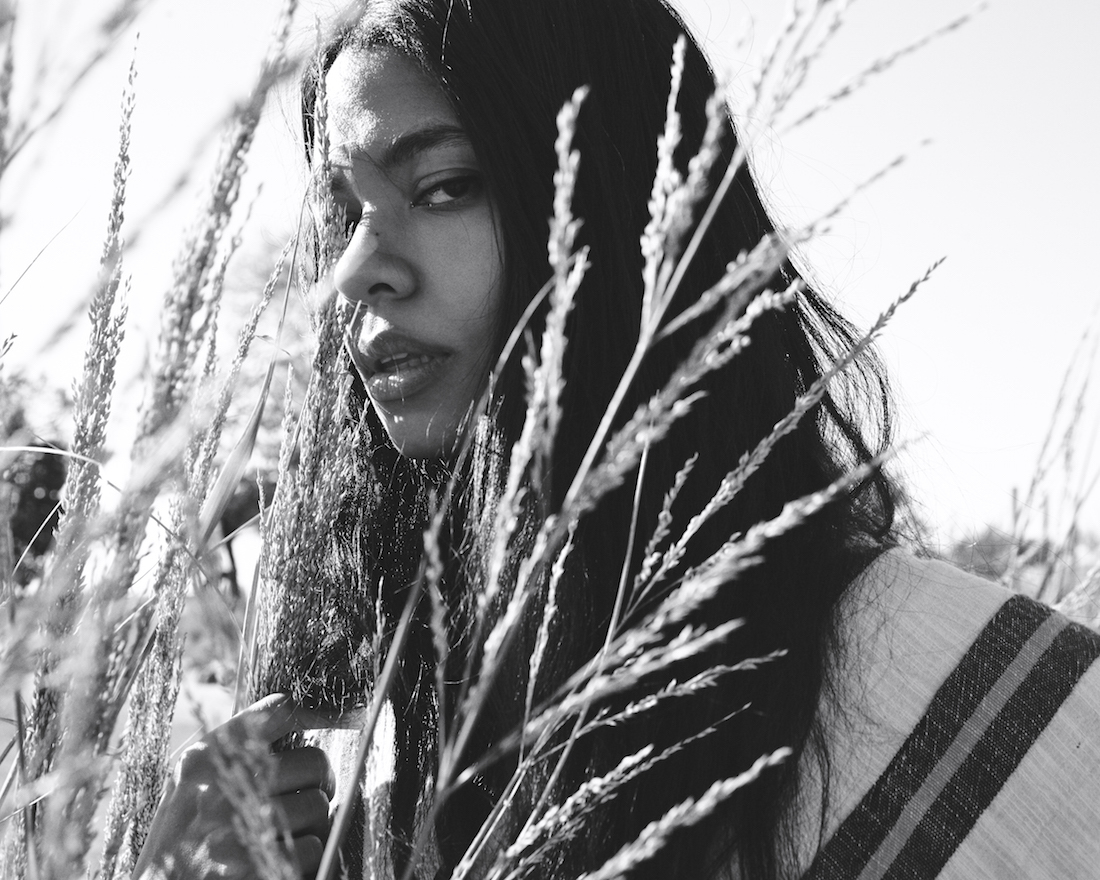VICE is supporting the launch of the Global Goals for sustainable development. In the next fifteen years, they want to achieve three massive tasks: end extreme poverty, fight inequality and injustice and fix climate change.
Aurora James founded ethical (and furry) shoe line Brother Vellies in 2013, and this summer, it was selected for the Vogue/CFDA Fashion Fund. But the real indicator of the brand’s growing buzz was Kanye West’s cameo at its spring presentation last month. He swung by to see the collection not once but twice – he liked the fuzzy clogs and hand-beaded sandals that much. But beautiful, conscious footwear isn’t Aurora’s only mission.
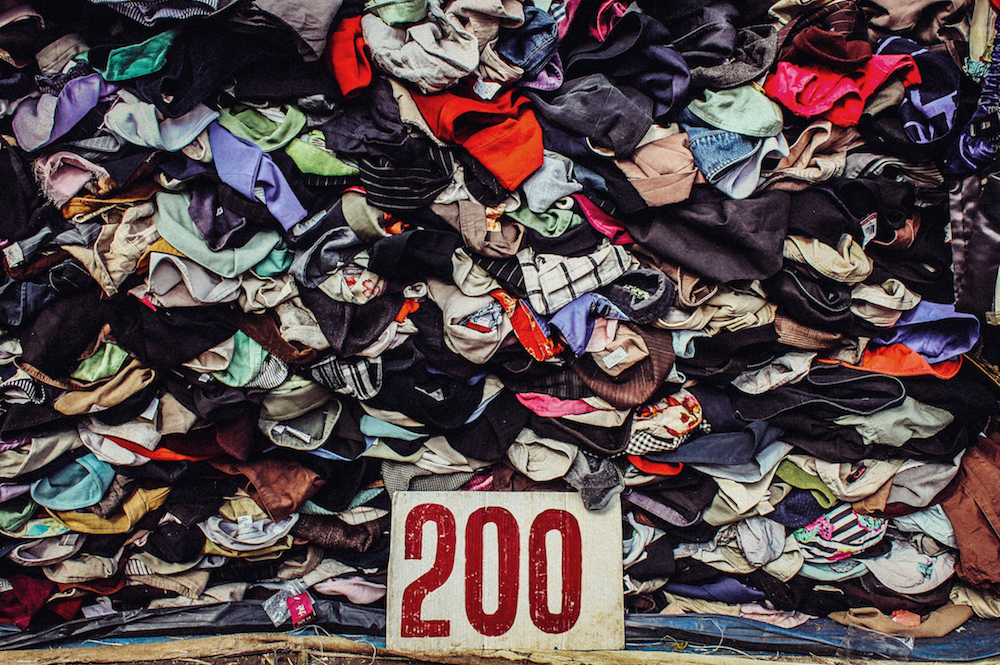
A few years ago, on a trip to Nairobi to visit one of the brand’s workshops, Aurora saw a Kenyan man cycling down the street in a T-shirt that read “Kiss Me, I’m Irish.” It was funny. But it was also just one of the many absurd side effects of the current system of international clothing donations. Every year, Americans discard roughly 12 million tons of clothing, and a large portion of it ends up in Africa. But, contrary to our instincts, that clothing may be doing more harm than good.
In 2014, Aurora launched the Brother Vellies T-Shirt Project to help raise awareness of this problem. Specifically, she wants to highlight the damage foreign textile donations can do to local industry in Kenya; the influx of free imported clothes effectively destroys the market for locally produced garments.
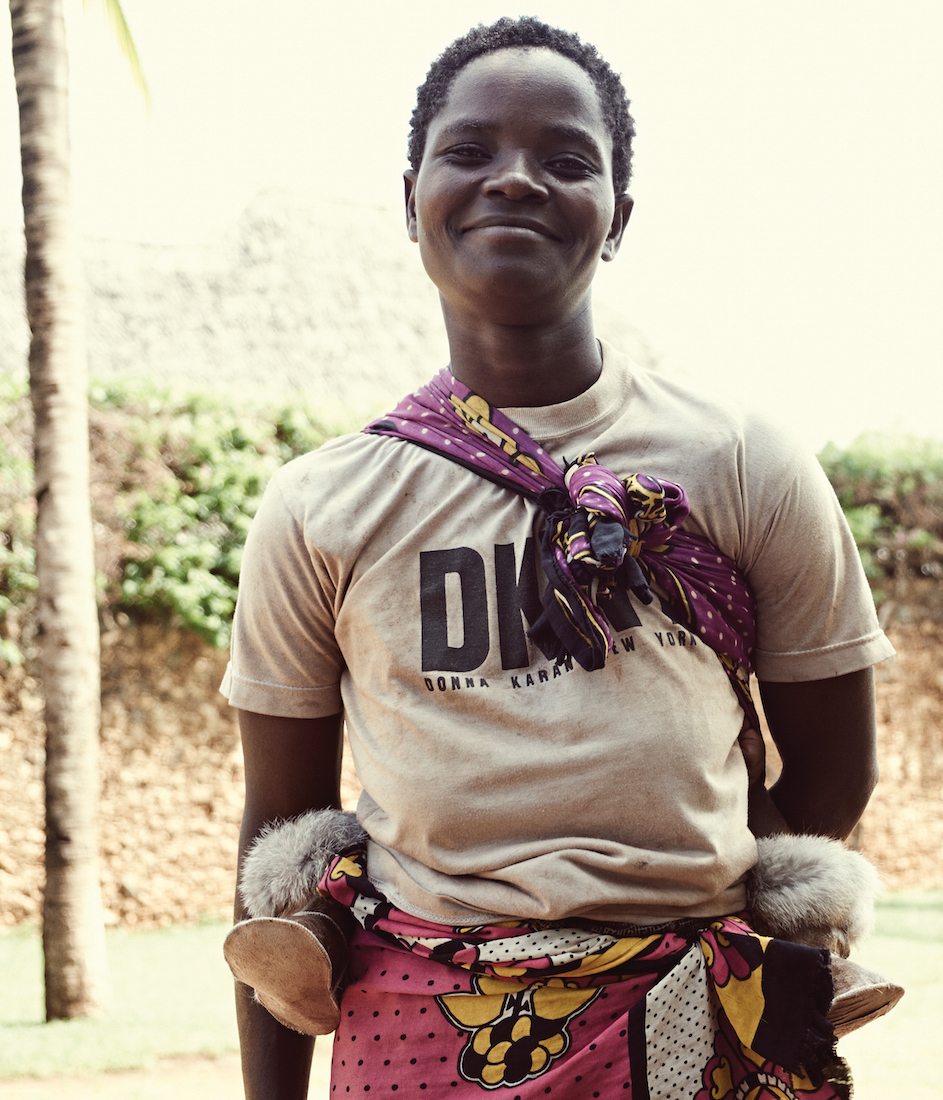
This is how the T-Shirt Project works: with help from the artisans at her workshops, Aurora finds great American T-shirts in Kenya and sells them right back to America through her website, then all the proceeds go towards skills training and medical care in the local community. Because we’ve been sending our castoffs to Kenya for decades, among the piles of once-worn H&M going-out tops and discarded Romney Ryan 2012 T-shirts are original 70s ringer tees and collectible pieces of 90s DKNY. Aurora is well aware of the irony of sending these donations back to where they came from – but that irony is exactly what she wants to call out: the money raised by selling a T-shirt back to the US can be used to make more of a difference in Kenya that the donated shirt itself.
How did you first become aware of the problem?
It’s pretty apparent to anyone who properly visits Kenya that the country is getting buried in discarded clothing. On my very first trip there, I started asking questions and quickly realized the massive effect these “donations” were having on the local job market and manufacturing industries as a whole.
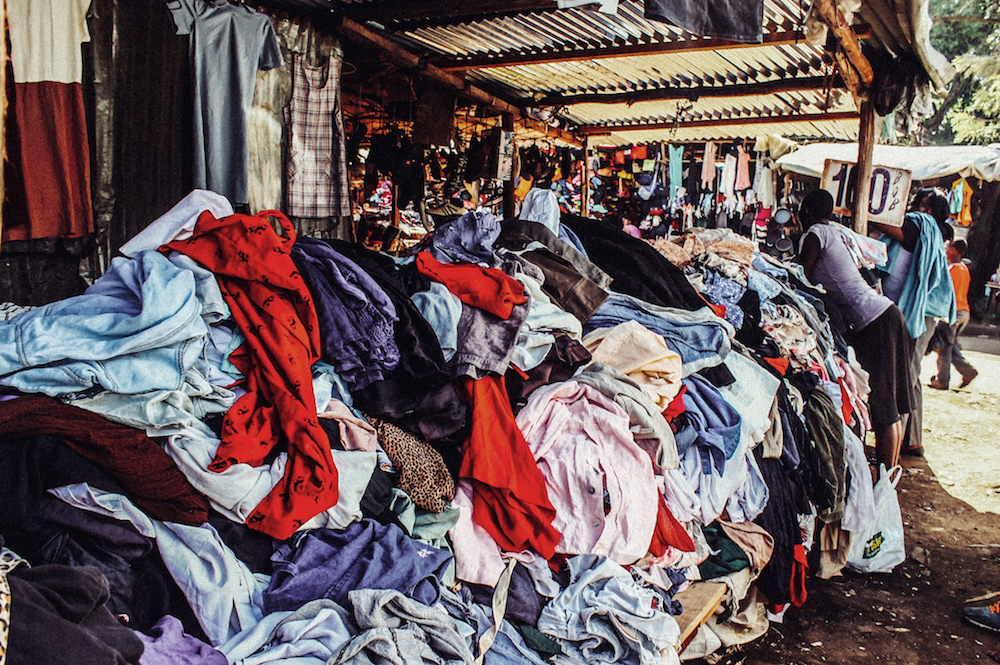
Can you give us a quick breakdown of why the problem exists?
I recall growing up as a child in the 80s and 90s and always being told to donate things to Africa. I think that idea was started with the best of intentions, but now there are purportedly eight extra T-shirts for every one person in Africa. That’s insane. Every year they go into production with thousands upon thousands of victory T-shirts for both teams in the Super Bowl. All of the losing team’s shirts have to go somewhere, right? I think at a certain point Kenya became a free disposal service to a lot of these companies; calling it a “donation” is really misleading in my book. If you go into a community and drop 1,000 pairs of free shoes you just killed that community’s local manufacturing industry and potentially a lot of jobs. Nobody can compete with free or almost free.
What needs to change?
As long as we continue to bog Africa down with our unwanted goods we will be hindering its ability to become self-sufficient. I’ve always been a fan of trade over aid. I don’t have to give our artisans free shoes, they have jobs, they can buy their own shoes.
How and where do you find the pieces you sell?
I made a list of different and fun shirts to keep an eye on. People in our workshop and friends of friends will send us pictures of things we might like that they come across and we’ll include those in with our shoe shipments. They’re all from around Kenya!
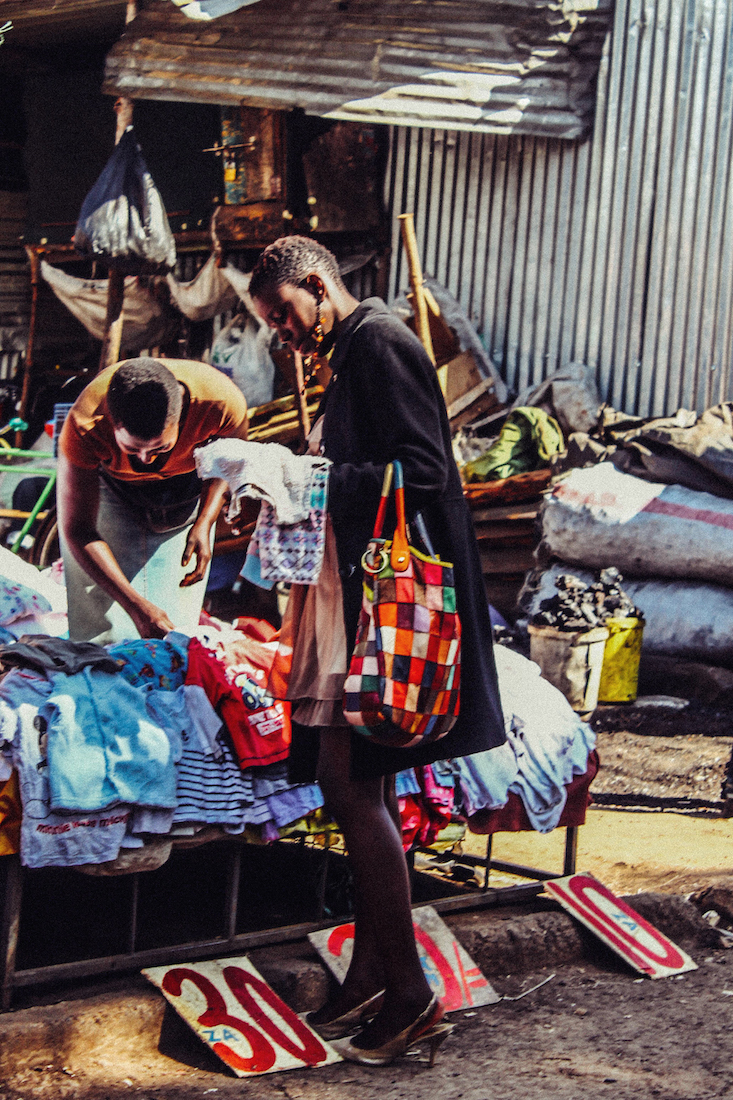
What are some of the best shirts you’ve seen?
I always love DKNY shirts from the 90s and Tommy Hilfiger sweatshirts. Nothing ever really disappears; it leaves your closet and goes elsewhere and this is that elsewhere. So it’s a really interesting trip down memory lane. Also seeing someone in Africa using a pleather mini knapsack is just so ridiculous to me. I see a ton of H&M and Zara over there, which is sad because it’s usually destroyed by the time it gets there anyways. There are also a lot of sports memorabilia shirts and any shirt you have ever gotten for free at any horrible event.
What’s your larger goal for the T-Shirt Project?
Inspiring people to buy less and love what they do buy more. I think the T-Shirt Project is really a vehicle for discussion. If we don’t talk about these things we won’t be able to change them. I love my industry, I’ve worked in fashion for my entire life and I think that is what drives me to be so critical at the same time. We need to do better. Something is only beautiful when it doesn’t leave negativity in its wake.
Credits
Text Alice Newell-Hanson
Photography Jason Eric Hardwick
